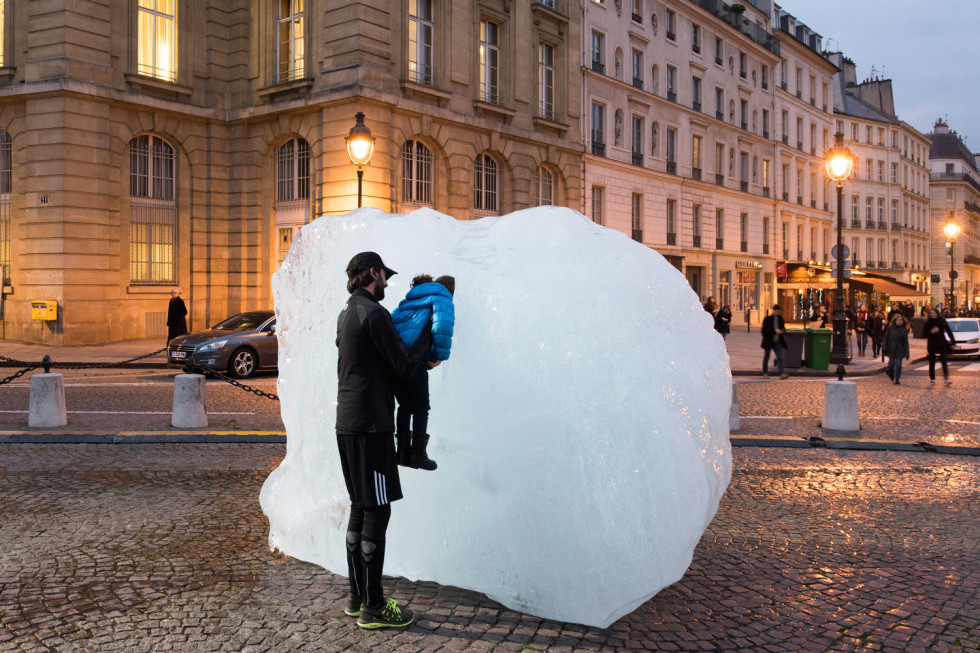
Ice Watch by Olafur Eliasson and Minik Rosing, Place du Panthéon, Paris, 2015. Photo: Martin Argyroglo © 2015 Olafur Eliasson
Symposium: Taking Action through Art and Economy
16.1 2016
Stockholm
16 January at 15–16.30
In the auditorium, Moderna Museet. In English. Free entrance. Limited seating. No pre-booking.
Moderna Museet in collaboration with Stockholm School of Economics
The dramatic ecological consequences of human activities urge for action.
Olafur Eliasson has for many years been deeply engaged in projects focusing on ecological challenges. Lin Lerpold is Acting Professor on the Mistra Chair of Sustainable Markets at the Stockholm School of Economics, and an authority on corporate social responsibility.
Programme
At 15
Introduction by Daniel Birnbaum, Director, Moderna Museet and Lars Strannegård, President, Stockholm School of Economics.
At 15.10
Lin Lerpold, Acting Professor on the Mistra Chair of Sustainable Markets at the Stockholm School of Economics, and the Executive Director of MISUM, a cross-disciplinary arena for multi-stakeholder dialogues and a research center engaging economist, political scientists, philosophers as well as policymakers and the world of business to enhance the understanding of sustainable development.
Lerpold is an authority on corporate social responsibility and her research has been focused on new business models for poverty alleviation, social innovation and human rights. Lerpold will discuss the sustainable development needed in the light of the great environmental and social challenges we face, and how decision makers, civil society, business and the individual could generate the change needed for environmentally, socially and economically sustainable societies.
At 15.40
For many years, the artist Olafur Eliasson has dealt with topics such as ecological awareness and, more recently, climate change. His installations often evoke questions about our perception and co-production of reality, about relations among humans and between humans and non-human entities, and about the interrelationships between nature, culture, and civic society. On the occasion of COP21, the UN Conference on Climate Change held in Paris in December 2015, Olafur Eliasson and geologist Minik Rosing presented Ice Watch, an installation consisting of eighty tonnes of Greenlandic glacier ice left to melt in the public square Place du Panthéon, in Paris.
“As an artist I hope my works touch people, which in turn can make something that may have previously seemed quite abstract into reality. Art has the ability to change our perceptions and perspectives on the world and Ice Watch makes the climate challenges we are facing tangible. I hope it will inspire shared commitment to taking climate action.”
Another example of Eliasson’s engagement in sustainable development, is the social business Little sun, a global project focused on getting clean, reliable affordable light to people without access to electricity.
At 16.10
Concluding discussion moderated by Isak Nilsson, Director of SSE Art Initiative.
